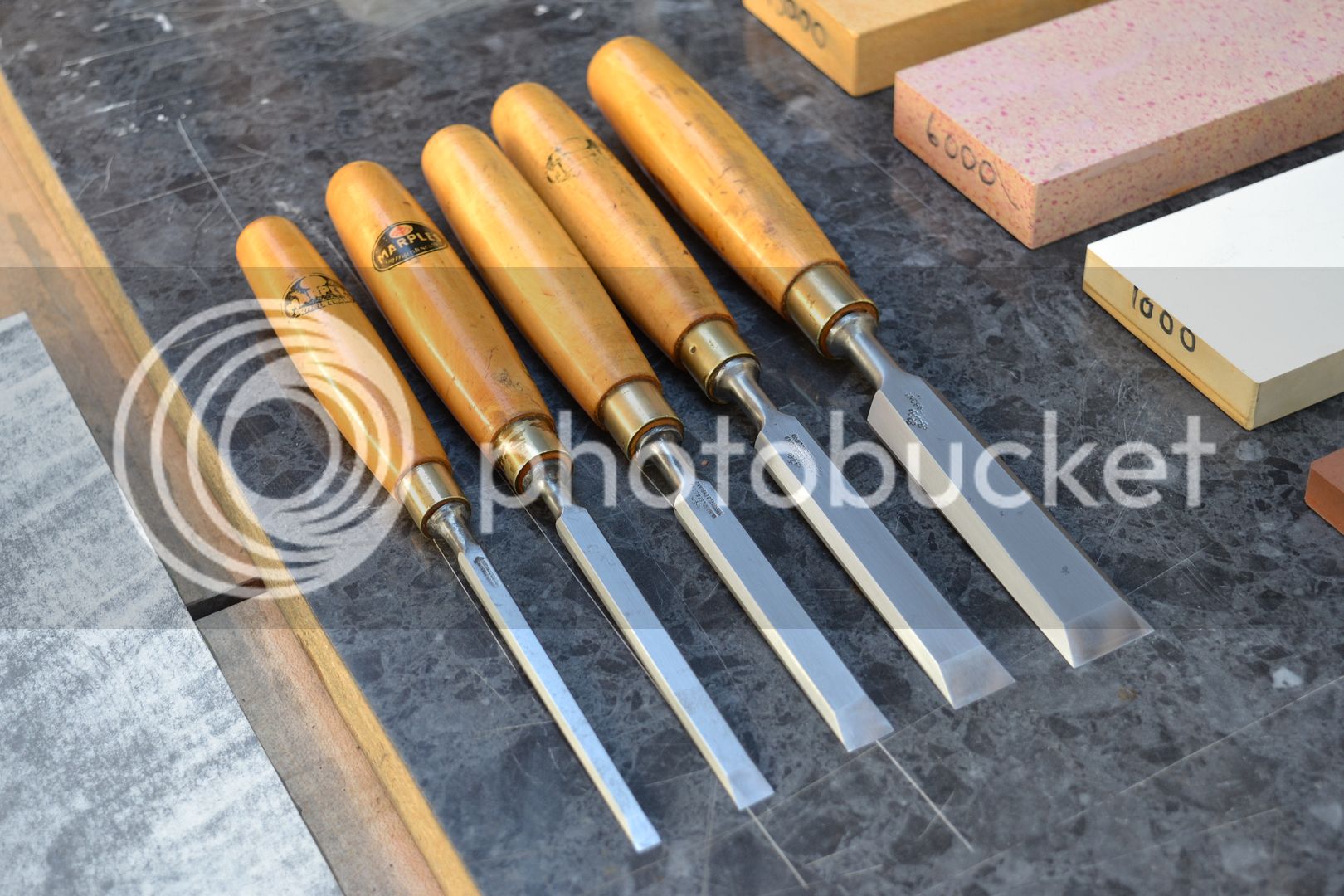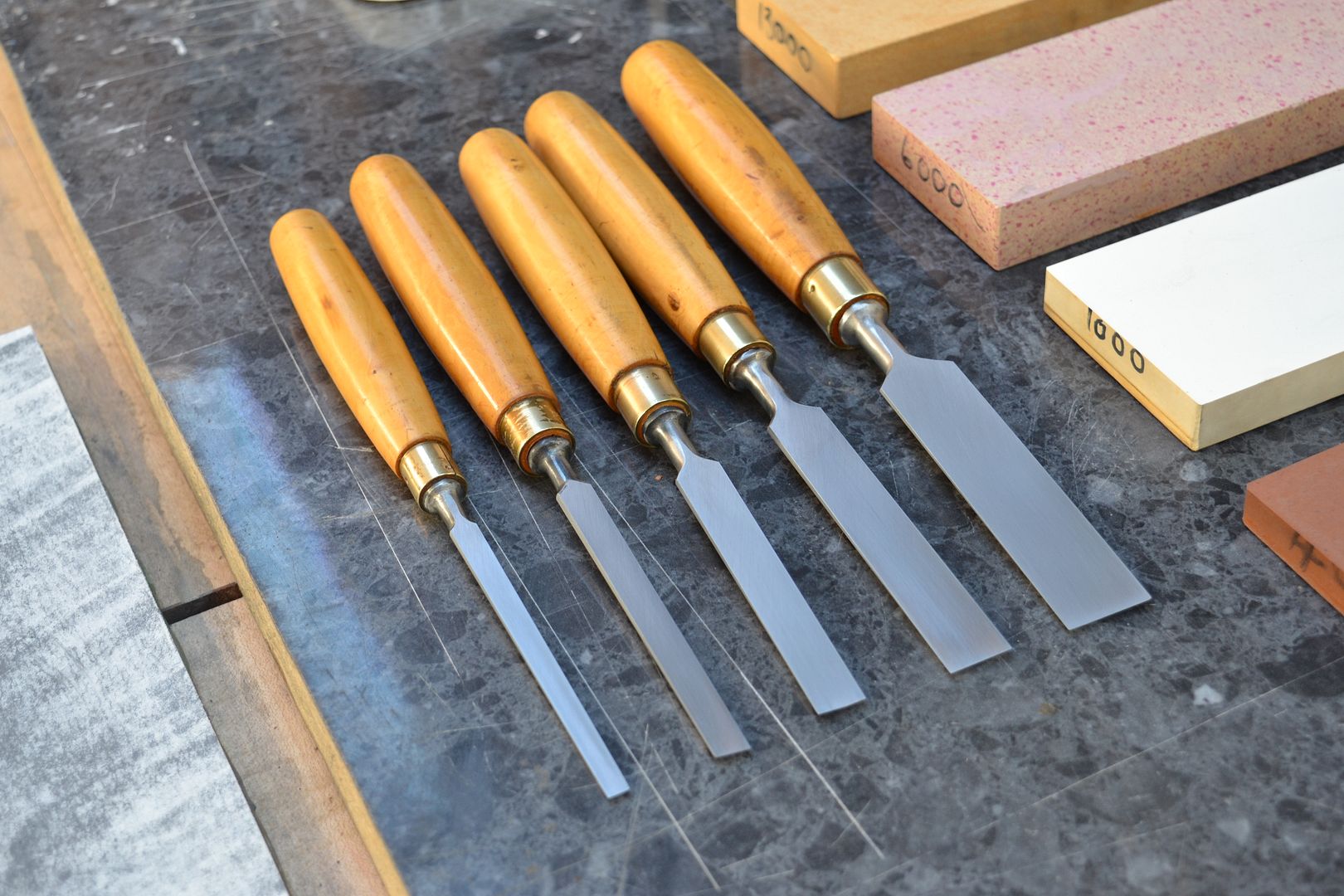Just to add a little to Custard's comprehensive post above, most modern chisels of the sort sold in the big DIY sheds are expected to be used for site carpentry and joinery, and perhaps not cosseted as much as some tools. They are therefore designed and manufactured with the possibility that that they may be abused as much as used; perhaps used for levering or wedging parts apart. Consequently, they tend to be quite strongly built, and maybe tempered a little on the soft side so as to be tough enough to stand the levering. They usually have a fairly strong cross-sectional shape, too - more like an old-fashioned firmer chisel, but with the corners ground off a bit. Some people refer to these as 'bevel-edged firmers'.
Perfectly capable chisels for their intended use, and arguably everyone should have a few for rough jobs and heavy chopping. The Bahco chisels Custard linked to fall into that category, as do current Marples branded offerings.
For finer cabinetmaking and some joiner's bench work, chisels with thinner cross-section blades tempered a little harder (so they tend to hold an edge a bit longer) are preferred by many because they tend to be lighter. They tend to have much finer lands, too, so can access tighter spaces and clean up corners more precisely. Some specialty makers do still produce such chisels, usually in small volumes and at quite a high price. Ashley Iles mark 2 bevel-edged chisels are probably the best on the market for their price in this bracket, but there are others such as Lie-Nielsen and Stanley Sweetheart, and a fair slew of niche makers.
Looking at older chisels - back in days when much more hand-work was done, and it was commercially viable for manufacturers to supply chisels to satisfy every requirement - and you see this reflected in the designs. Most carpenters and joiners preferred stronger 'firmer' chisels - rectangular cross-section blades, strong necks - whilst cabinet makers preferred finer, lighter bevel-edged chisels. For really heavy work, registered firmers were available - very thick blades, very strong necks, and often double-hooped handles. There were also a few specials, such as the very long, thin paring chisels favoured by patternmakers. Good older chisels can be a very good investment, but like all second hand tools, there are some duds about, too, and even the best will need a wee bit of fettling to perform at their full potential.











































